On Monday, you learned what a watershed is and how to make a mini watershed with paper. Today we will talk about some of the things that make up a watershed: streams and the organisms that live in them.
Streams are where water first gathers in a watershed. They join together to make big rivers and eventually flow into the ocean. Streams are home to many forms of life, including plants, bugs, and animals.
Organisms make their home in different parts of streams, such as:
- under rocks
- in tree root clumps
- in vegetation.
For example, salamanders prefer to live in spaces under rocks. Fish like to live in deeper pools in and around tree roots. Some bugs like to live in clumps of dead leaves. One type of fish called “darters” even likes to live right on the stream bed!
Here are some common critters you might find in streams in Ohio:
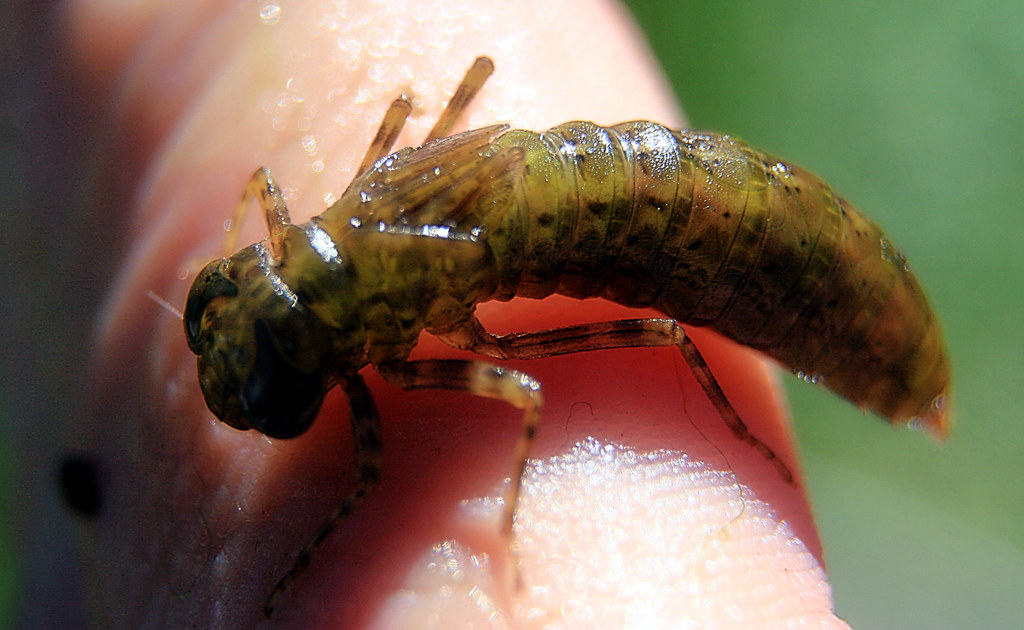
Dragonfly nymph 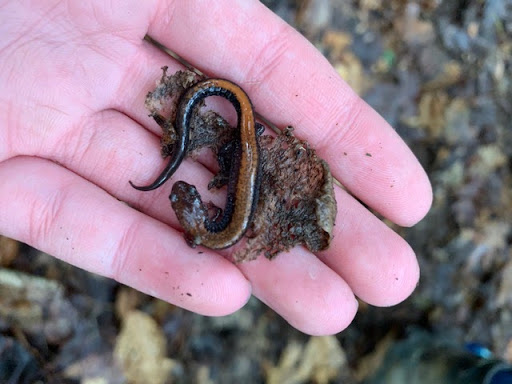
Red-backed salamander 
Crayfish (Crawdad) 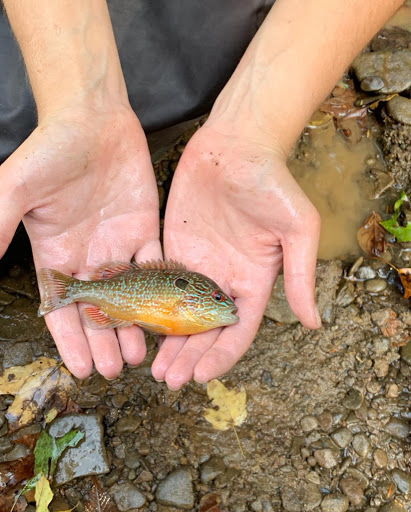
Longear Sunfish
Have you ever seen an aquatic species? Tell us about it in the comments.
Can you take pollution?
Streams aren’t always in perfect shape. Sometimes streams can become less healthy due to pollution. In our area, some common forms of pollution include:
- Acid Mine Drainage (we’ll learn more about this next week)
- harmful nutrients from sewage (that’s what’s flushed out of your toilet)
- sediment from human-caused erosion (pieces of dirt and grit that cloud the water)
- sometimes, runoff from agriculture.
Pollution makes it harder for organisms to live in a stream.
Some species are much more sensitive to pollution than others. We can divide these into two categories: tolerant and intolerant.
Tolerant means that the plant, bug, or animal can survive with higher levels of pollution. They laugh in the face of danger!
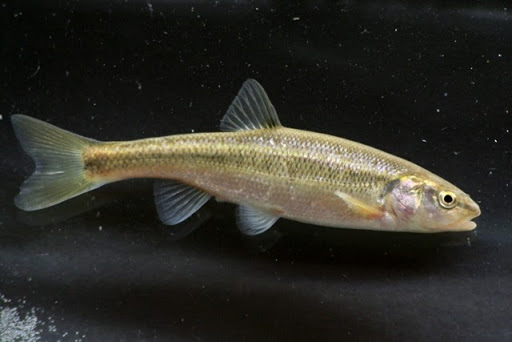
Intolerant means that the plant, bug, or animal can’t survive pollution well. Like Goldilocks, they need their home to always be just right.
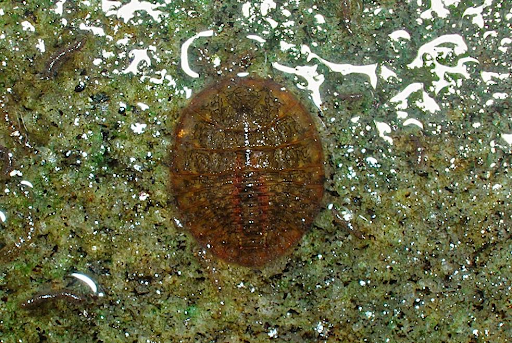
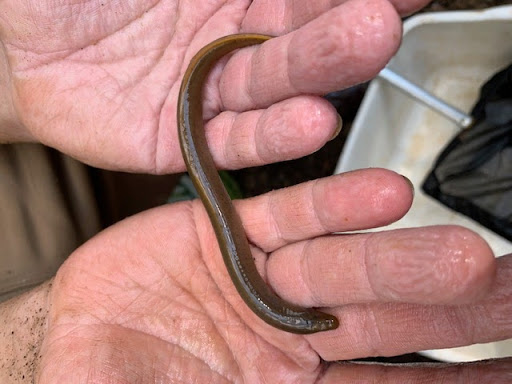
One way you can tell if a stream is polluted or not is to see what is living in it. Are you only finding species that can tolerate pollution? That’s not a good sign. Are you finding both tolerant AND intolerant species? Great!
I was encouraged to find this pollution-intolerant caddisfly when I visited a creek yesterday.
Your mission: Diagnose a stream’s health
Option 1: Visit a stream
If you can, visit a creek or stream (you may need to take an adult). See how many species you can find!
When looking for stream critters, remember to look in different kinds of habitat:
- Gently lifting rocks and checking what is under them. Make sure to always return the rock to its original position.
- If you have a net, try dipping it under tree roots and around vegetation. Check clumps of dead leaves.
Hold aquatic organisms safely
Always use wet hands when you touch a critter you find in the stream (bugs, fish, salamanders, frogs, etc.)!
If you have hand sanitizer on, do not touch any stream critters. They can absorb the hand sanitizer through their skin and it can be harmful to them.
Instead, take pictures of them in the net or on a rock.
What species did you find? It’s ok if you don’t know what they are. Some ways to figure it out include:
- Take a picture! Share it here in the comments, or on iNaturalist.
- Try to figure it out yourself. Compare what you found to this video library of macroinvertebrates or the ID tool at https://www.macroinvertebrates.org/
Are the organisms you find pollution tolerant or intolerant? Do you see anything else around the stream that makes you think it is or isn’t polluted?
Finally, make your diagnosis: how healthy is this stream? Tell us what you decided in the comments?
Option 2: Explore stream organisms at home
If you are staying indoors or do not have access to a stream, you can explore stream life virtually:
- Explore freshwater habitats and their life in this game.
- To get a little nerdier, learn to identify stream insects and related life at https://www.macroinvertebrates.org/, then quiz yourself with these videos.
- If you want to see what macroinvertebrates ordinary people have found near your home, explore the map on iNaturalist.
Do you have a favorite aquatic species you discovered? Where could it live?
Based on what you learned, draw a healthy or an unhealthy stream. What does it look like? What critters are in it? What habitat is there for them?